MVP in Software Development: Comprehensive Overview
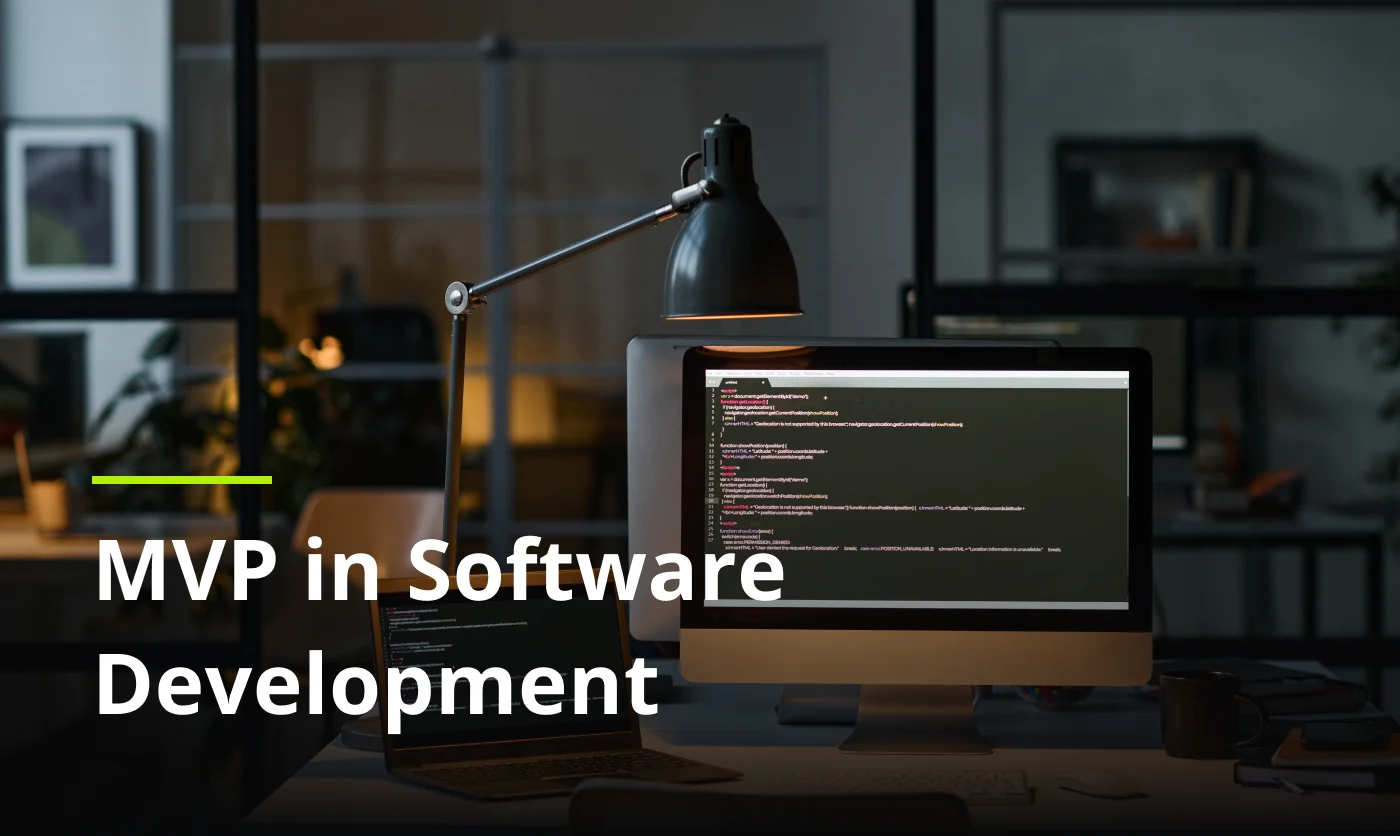
The process of MVP software development is widely popular and draws clients in by opening the doors for profitable opportunities which are hard to ignore. Still, the topic of minimum viable product is generally less understood and can be unfairly swiped under the rug in favor of other approaches.
To turn the tide and expand your knowledge of what goes into software development for MVP and every nuance that is important to know, we present to you our overview. By the end of this read, you will learn how to build a truly successful product while keeping your expenditures at a minimum.
We will explain why MVP in software development is an important practice and why you should consider turning your attention to it, as well as unveil its full meaning, budget you need, benefits, challenges to leave no stone unturned.
What is MVP software development?
To start off on the right wavelength we have to discuss the meaning behind today’s topic — a minimum viable product stands for a development strategy where instead of building fully-fledged software from start to finish, programmers focus on bringing to life only the core features.

This is explained by the purpose of getting the value proposition of the product straight and testing the MVP with real end users to gather their honest feedback about the solution. With the feedback at hand, the development team can proceed with iterating the product to fit the demands of the consumers and continue the said process of MVP software engineering until a satisfying result is reached.
The research conducted with the users can be further separated into qualitative and quantitative data where the former is responsible for collecting subjective perceptions of the participants and the latter aimed to gather objectives and numbers from the study.
In software development MVP the types are also divided into low fidelity and high fidelity prototypes. As the names suggest, the low-fi products are more simplistic versions of the solution such as a landing page, fake door and other types. At the same time high-fi can include types like concierge, Wizard of Oz, etc., which are represented by more advanced and comprehensive MVPs.
Don’t fret, we will discuss some of the most widespread kinds of minimum viable products in the next section. From the aforementioned definition you should have formed a basic idea of what this approach to development entails at its core foundation.
Types of MVP in software development
We already touched on the aspect that there are multiple types of MVPs to choose from based on how well they suit your objectives and initial resources. They are further divided into low-fidelity and high-fidelity options so let’s expand on this topic more to draw a full sketch on the matter.
We are going to overview the five most commonly employed types to narrow down your list as efficiently as we can.
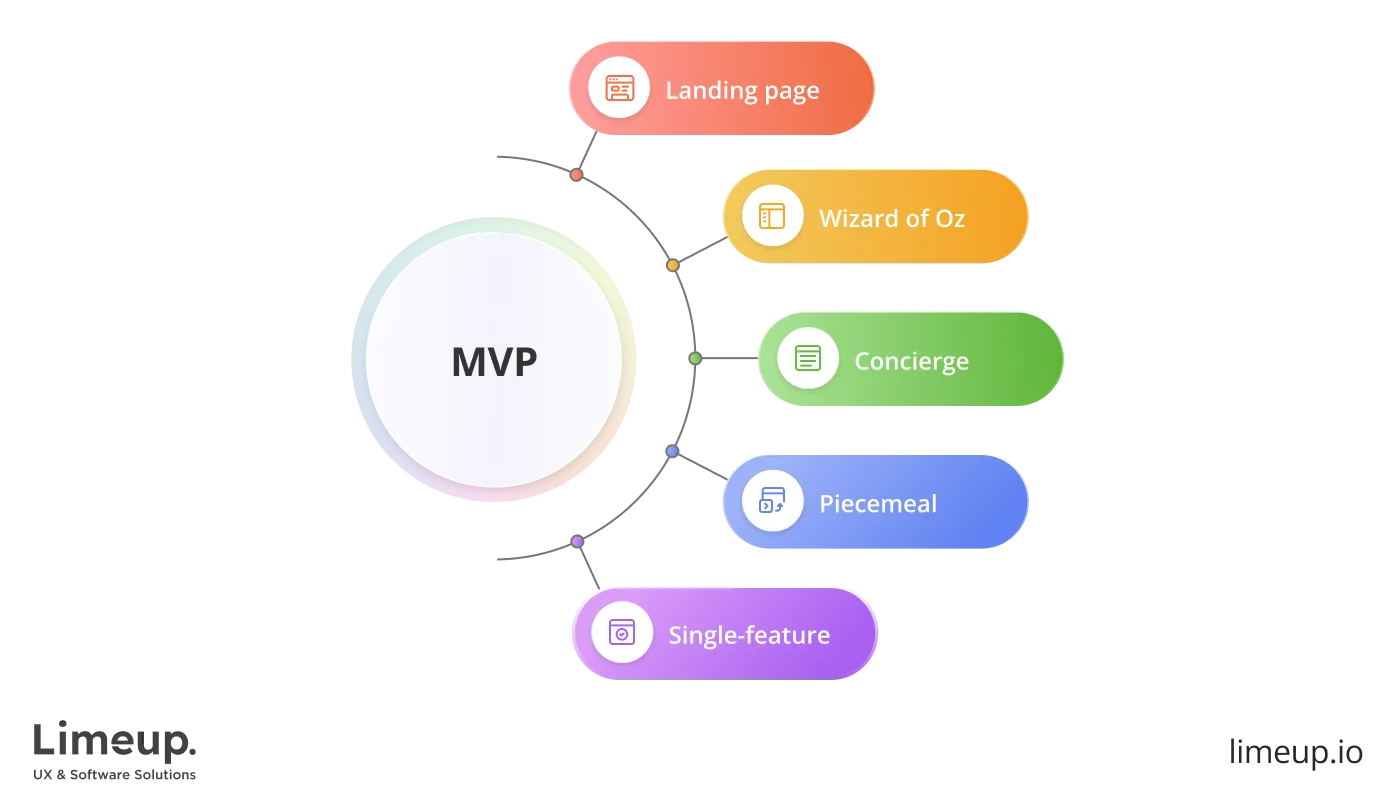
Landing page MVP development
Unlike more complex approaches to building an MVP the landing page type can seem like a piece of cake because it involves the creation of a single page with minimal functionality. Let’s say you have an idea for a new website but are unsure if the customers are going to end up liking it or if your concept is valid at all.
This is where this kind of minimum viable product software development comes in handy as you are free to focus only on the core representations of your web idea with less effort put in from the engineering side. To test a landing page MVP you will want to employ techniques such as seeing how many users try clicking on the buttons, using heatmaps and much more.
Wizard of Oz MVP
The Wizard of Oz type is a more complex viable product since it is a case of judging a book by its cover. What it means is that you have to put in effort into creating a polished-looking user interface so that the customers will feel like the front end of the product is completely functional.
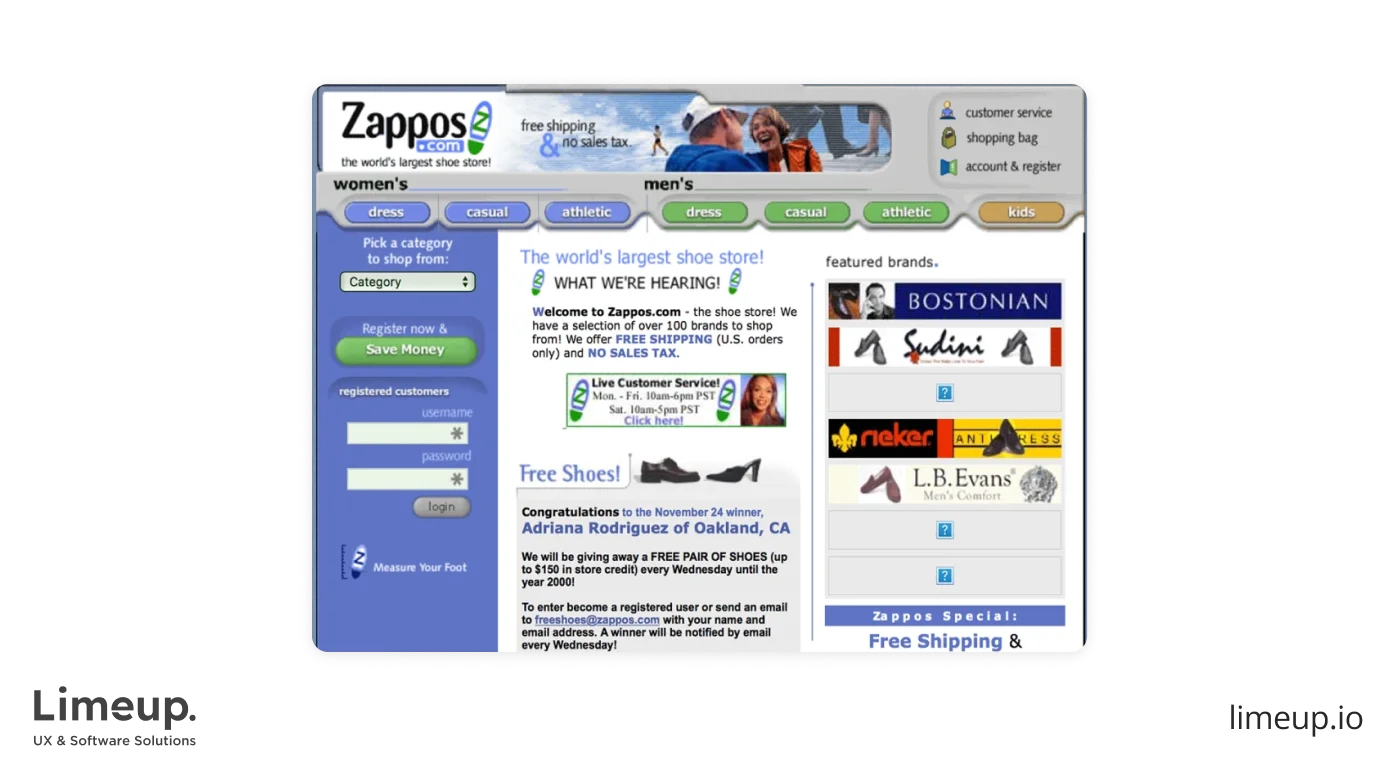
The trick, however, here is that on the back end every task is completed by a manpower, meaning each action such as a purchase or a search is done manually by a developer on the other side. What you receive in the end is a thorough understanding of the user journey map, their behavior and perception of the solution which you can later on develop on the back end fully.
Concierge MVP
Similar to the previous type of custom MVP software development, a concierge type is also controlled by the programmer on the server side of the application to complete tasks at hand without automation. Nevertheless, the difference lies in the fact that concierge MVPs are not required to have a fully laid-out user experience relying only on minimal interface implementation.
This type is more affordable than the Wizard of Oz one ultimately yielding similar results, although both types can be implemented as a follow up of the previous stage to gradually increase the complexity of the solution.
Piecemeal MVP development
The piecemeal type can be more complicated to wrap your head around especially if you lack the knowledge in regard to programming. In simple words, this minimal viable product relies on using third-party apps and integrations to build the functionality for your solution to work on an acceptable level.

For example, you can implement payment gateways from outside resources without spending money on custom development at early stages. You can even use pre-built or drag-and-drop options for MVP design to bring expenditures to a minimum but the con of this model is that you are dependent on third-party resources which you cannot fully control so issues like downtime can infest your progress.
Single-feature MVP
Lastly, we want to highlight an MVP product software development model called single-feature which strips all the bells and whistles even compared to other MVP types. In a nutshell, with this type you only focus on developing one core feature, i.e. the purpose of your solution, and aim to solve a concrete problem users are facing.
Single-feature MVP significantly lowers budgetary expenses and goes straight to the point of testing your product at its most basic form while keeping the door open for future expansions of the functionality. It is objectively the best way to validate your core proposition without paying an arm and a leg for development.
The budget needed for software development for MVP
The question regarding how to properly calculate your budget for a viable product so you don’t end up in a pickle when providers extend you the quote is an intricate matter. You need to keep in mind that while this kind of approach is generally more affordable than diving head first into a fully fledged development, it does not ultimately cost a penny.
When you go out of your way to request MVP software development services you can expect to hear different ranges from one vendor to another based on a multitude of factors. Since no two projects are completely the same, finding ground on the average price can become more elusive.
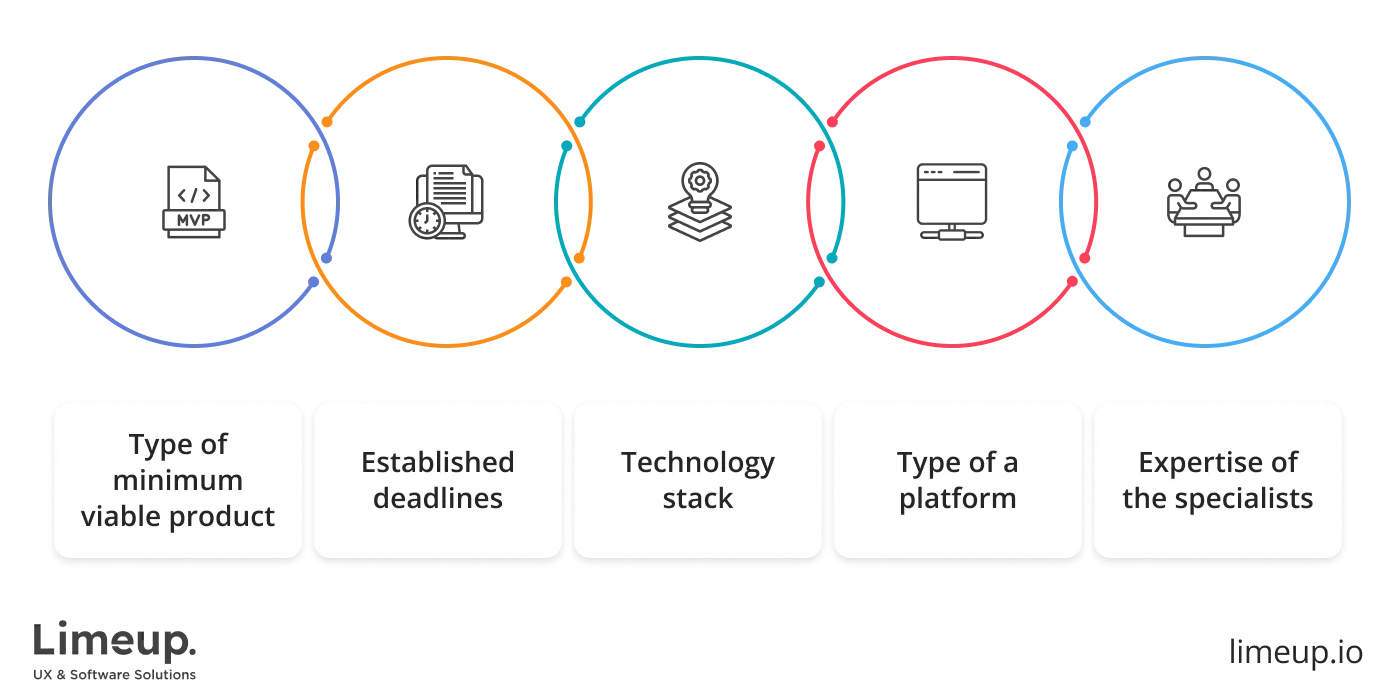
First, let’s get on the same page about the various aspects that are going to influence the cost of development and later get a sense of the average charges so you can be better prepared to set aside a certain sum.
-
Type of minimum viable product. As you are now aware, this kind of development method is an umbrella terms that hold numerous types of models, all of which flow between low-fidelity and high-fidelity options. This means the costs of developing any given type is not going to look the same in any case.
On top of that, within a specific type there is a delegated amount of complexity and features you are capable of implementing which raises the difficulty of the project and, simultaneously, its cost.
-
Established deadlines. For custom MVP software development you can expect the creation timeline to be its own intricacy since the speed of the progress may be distinct from what you have in mind. How fast the developers work, including the time for iterations and revisions, depends of their qualifications but most importantly the deadlines you set.
An important takeaway here is that having realistic expectations in terms of time for development can save you money because if you declare strict deadlines, you are likely to spend a pretty penny for the technicians to focus on delivering solely your project.
-
Technology stack. Depending on the kind of MVP you are looking to present to the world, a set of programs, tools and technologies required may look different from other projects. It may come to you as a surprise but the expertise in certain tech stacks may cost more as they can be more advanced or rarely used in MVP software development.
-
Type of a platform. An application, a website, custom software — all of these options you have at the table are not priced equally based on the difficulty of working with one or another platform.
Luckily, the choice of a product is agreed upon at the very discovery stage when you are setting a plan for the project which means it will not become a hidden or a surprise fee at the phase of picking a provider and agreeing on the quote.
-
Expertise of the specialists. Speaking of providers, it should not take you by surprise that different vendors set different prices for their services. Selecting a suitable partner for software development MVP is a tedious process but you should keep at the back of your mind is that price does not always equal quality.
Capable specialists in this field may set affordable charges while companies that base their fees on their reputation or anything else may skyrocket their requests. What matters is their qualifications and insights into this topic to deliver a truly viable product.
With all of this information safely stored in your mind we will plant the seed for the possible charges in the table below.
| Type of MVP | Work hours required | Average costs |
| Basic MVP | 300-600 | $5,000 – $15,000 |
| Medium-level MVP | 800-1200 | $20,000 – $50,00 |
| Advanced MVP | 1500-2000 | $50,000 – $100,000+ |
Benefits associated with MVP software engineering
Opting for an MVP would not have become such a phenomenon as it is today if it didn’t bring impressive opportunities and benefits to businesses. While you may have already heard about a few of the advantages of stepping into this kind of road, we want to expand on the topic in more detail to leave no doubts hanging in the air.
With that being said, below are the five most prominent gifts you can find under your Christmas tree when you decide in favor of proceeding with MVP creation.
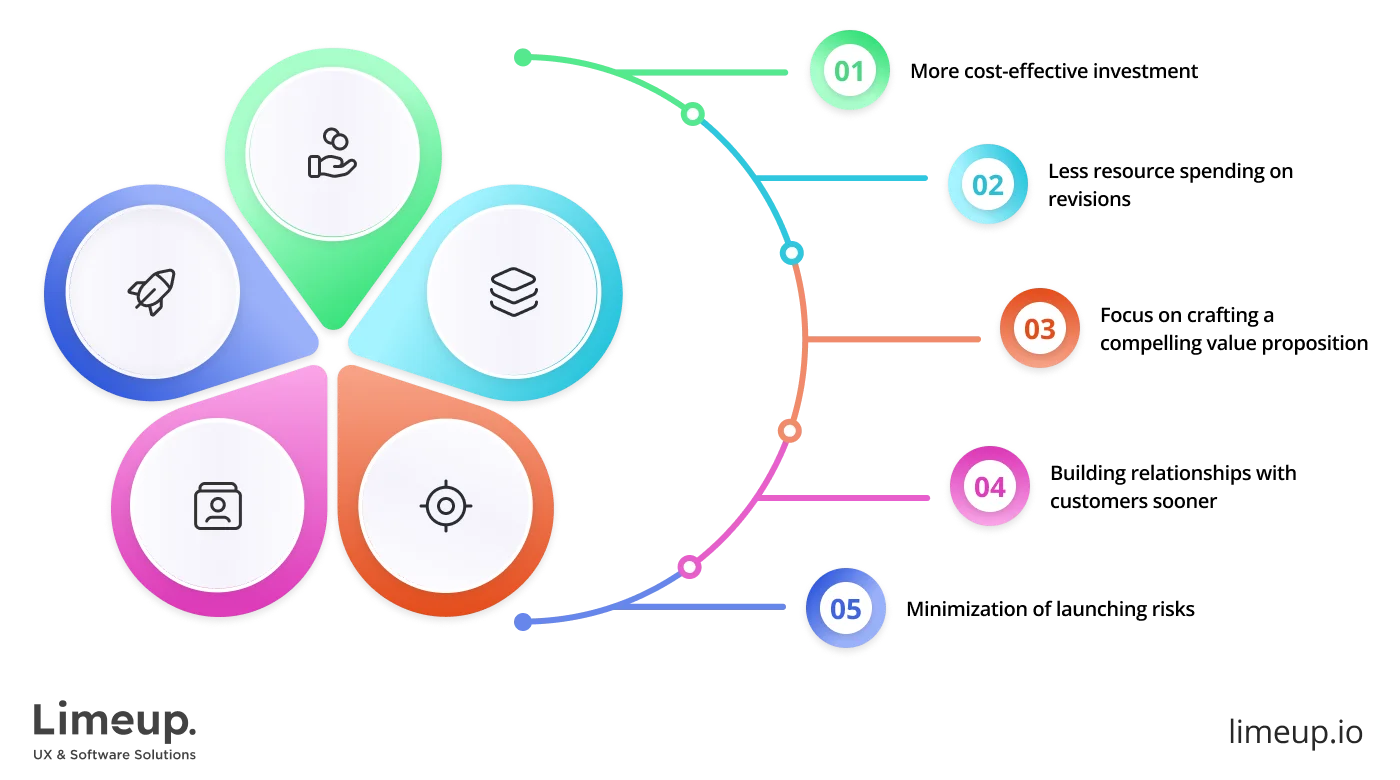
One of the major appeals of why there are clients in line for minimum viable product software development is unmistakably the attraction of investing less initially. Take into consideration this fact: nearly half of all startups meet their end in their first years of existence because they run out of financing.
Sure this could be due to poor resource allocation or having unrealistic expectations but the truth of the matter is that MVPs are here to make those scary perspectives come close to zero. With the money you put in from the get-go you can yield more productive insights you will need to proceed with getting your solution a competitive place in the market.
Following from the previous point where most startups simply run out of cash it could also be a factor of spending budget on revisions after a full-scale launch where business owners realize they stepped into the wrong territory. An MVP of your own enables you to peek under the curtain of the market, test your idea and ultimately come to the stage with a solution that already meets the demands.
Of course, revisions are still a possibility you have to be ready for, mentally and materially, but they are much less likely to put a nail in the coffin of your operations.
A lot of startups fail to do their due diligence of deeply analyzing the market and end up crafting something on a whip that could be popular and that users will inevitably be interested in what they have to offer. However, most of the time they release sub-par solutions which were already perfected by other corporations and are left with nothing new or exciting to bring to the table.
A software development MVP process involves profound market and consumer analysis to identify gaps in the industry and innovate solutions that truly bring value to the users while solving their problems which compels them to come back again and again.
Accelerating time to market is a wild goose chase for new businesses that want to settle in the niche faster and build brand awareness from that point onwards. Such an approach can result in many mistakes along the way and fail to bridge a point between customers and the product properly.
With a minimum viable product business owners can start building a loyal fan base around their solution with the right strategy, focusing on the feedback they receive from users and be agile to implement changes on the go ultimately creating a sense of trust and reliability.
MVP for software development is the most optimal choice in terms of minimizing your chances that the unfinished or improper launch will blow up in your face. Sometimes, the first few months (which are usually monumental for emerging brands) may not bring results as they were predicted due to various reasons like missing the mark of user needs, not bringing value to the niche and more.
Through rigorous testing of the viable product you already have all of the cards on the table to make the right move in the most crucial moment and become a breakthrough that won’t fail in a year’s time.
Challenges of minimum viable product software development
It is not all sunshine and rainbows when it comes to putting your faith into MVP production since, just like with any business strategy, there are common pitfalls clients tend to fall into when they are unaware of them and unprepared to tackle them firsthand.
The benefits of this model are clear as day but the problems may be more obscure and not talked about enough. From our point of view, it is better to come in guns blazing into a battle than be stunned midway, so here are the challenges you should keep in mind.

The discovery stage before MVP software engineering can be unfolded is possibly the most important moment that is going to determine the success of the solution in the long run. The goal you should be running toward is a cohesive and thorough analysis of the market to unearth what problems your target audience faces, what your competitors are able to address and what gaps are still unfilled that your product can cover.
As we mentioned before, taking a trendy idea and running with it is insufficient to create an MVP and be sure that the launch will go smoothly.
Since a minimum viable product is entailed to be represented only by a restricted set of features that demonstrate the value of the solution it becomes a critical point of getting to the bottom of which features are enough to showcase the product. Developing too little or too much is a tight rope which you are required to walk.
With a trusted team by your side, you can weed out unnecessary functionality and focus on pinpointing the most valuable aspects so you don’t bite off more than you can chew.
Presenting your product on a golden plate even with this strategy for development is important so don’t be fooled by the notion that an MVP can be half-baked when released to the public. When building MVP software design, you cannot skip a comprehensive conceptualization, covering the visual and user satisfaction side of a solution.
Be diligent about designing and iterating wireframes, mockups and prototypes until you feel completely secure that your idea is represented how you see fit and the end users have no issue with navigating the interface to avoid falling into this pitfall.
The purpose of relying on a minimum viable product instead of diving head first into an all-encompassing software development is to test your solution at early stages with the target audience. Which naturally flows into a common problem of not gauging everything at your disposal to collect as much constructive and subjective feedback as possible.
Luckily, with proper management of the user research stage, there is a variety of reliable tools available to you, such as SurveyMonkey, to gather what users think of your product and plan iterations from that point onward.
This factor may come across as obvious but in reality the influence of a fitting MVP software development company is often overlooked and shrugged off as something you have a hold on. The abundance of qualified providers on the market is hard to deny which can lead clients to skip checking their capabilities specifically in developing a minimum viable product.
With the challenges outlined below it should leave no doubt that this strategy is nuanced and distinct from traditional types of development (which we will touch upon next) so the team has to be well-versed in such intricacies to deliver a product with full potential realized.
MVP vs. traditional software development
In case the difference between MVP for software development and traditional product creation is still not crystal clear, we want to level with you by taking a little time to get the uniqueness of each approach straight across. There is no shame in dotting all the Is and crossing all the Ts since these two concepts are indeed very alike yet distinct in their core principles.

Let’s turn to the table below to get a consistent understanding of the difference between each option you have.
| Aspect | MVP building | Traditional development |
| Purpose | Test out the validity of a future product idea with real users and focus on iterating it until the needed goals and results are reached. | Develop a complete and fully functional software from the moment of discovery all the way to deployment and maintenance. |
| Time to market | MVP product software development increases time to market and lets users become familiar with the solution early on. | Time to market is extended from the need to overcome every creation phase up until the release. |
| Cost | More cost-effective initially not requiring large investments at the beginning. | The price is paid in full for the entire implementation of the software including additional costs. |
| Flexibility | Minimum viable product software development allows for agile changes during the progress and adaptability to new discoveries from the feedback. | Limited flexibility during the development process, less swift adoption of new features and changes in requirements. The final product adheres to the initial objectives. |
| Future | Ongoing process of development until the most optimal and suitable solution has been reached with future maintenance. | Maintenance and support services are required to keep the polished software updated and secure with minimal development intervention. |
Now there should be no doubts or confusions left as to what makes each development strategy distinguishable which leaves you with your hands united to pick the most fitting solution for your needs, whether it’s MVP in software development or other paths.
Conclusion
With the information that you have now put into a special place in your mind it should not raise any questions as to why MVP software development is such a prevalent topic that draws clients in like butterflies into the light. Now you are as well equipped with a nuanced knowledge on this topic and can proceed with turning your idea into reality with carefully weighted decisions.
With our trusted insights by your side you won’t have an issue stepping into this territory fully ready to face challenges and reap the benefits. After all, a minimal viable product model is possibly the best approach to getting things done right as safely and easily as it can be.

